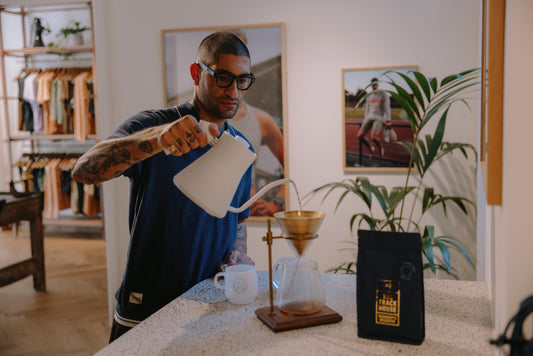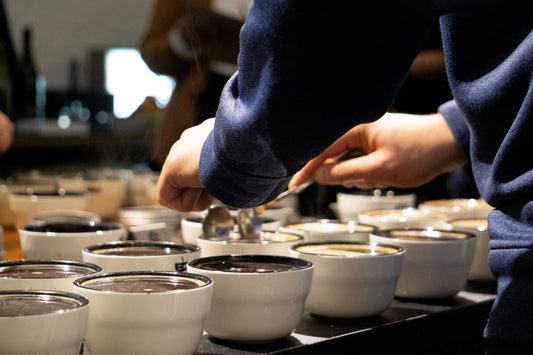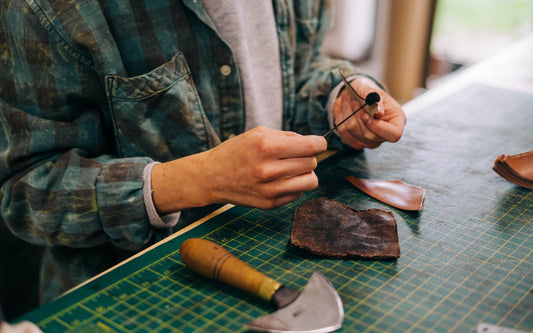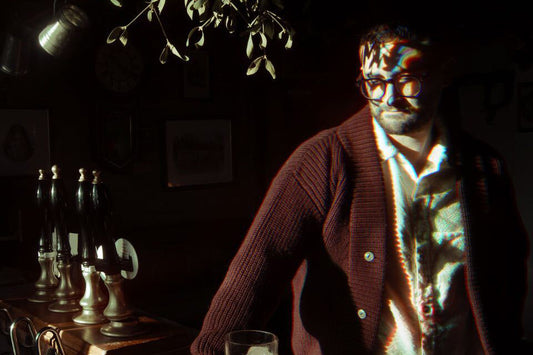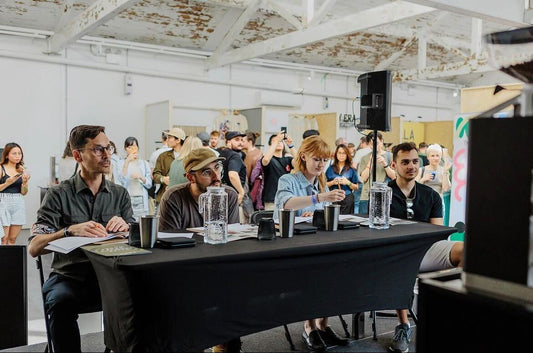
On Tuesday, we sent out 52 bags of practice coffee to the each of the national and regional finalists that will be descending on Dublin in three weeks time.
As competitors have been frantically plunging away across countries and continents in a bid to secure a place in the final on June 23rd, we've not only been busy organising the English Championship, but readying ourselves for our involvement as roasting partners in the World Aeropress Championship.
It all started towards the beginning of the year, when we began speaking with Café Imports, long-time collaborators of the WACs and even longer-time friends and partners of our own. Together we started to work towards selecting a competition coffee, with our aim from beginning to end being to ensure whatever was chosen was well-produced, interesting and, of course, delicious.
On an unusually sunny Tuesday afternoon, we convened in our Bethnal Green Roastery to gather round the cupping table together and sample potential options. Laid out before us were a veritable smorgasbord of fresh crop coffees all vying for a place in the brewing chamber on the day of the competition. The water was boiled and poured over the fresh grounds, the cupping bowls were broken and skimmed, and cupping spoons were poised between thumb and forefinger.
We began.

Several clockwise rotations of the table followed before a lengthy discussion on taste, freshness and available quantities. By the end of the afternoon, we had made a decision.
This stemmed from a multitude of factors. First and foremost was taste: sandwiched between delightful and comforting sweet, mellow caramels and a vanilla finish were bright, citrusy lemon balm, candied lime, alongside a white peach acidity. Combined, these made for a clear, complex and satisfying cup. As interesting as the tasting notes was the story of the coffee itself. Usually choosing to source, roast and brew coffees from individual farmers when working in Colombia, Río Negro presented an opportunity to showcase equally exceptional work, but in a different way; the lot is communally produced by ten farmers in and around the village of Río Negro.
Not that strange an occurrence in itself, what sets it apart from other community lots is that the coffee is a single, less frequently found variety - Yellow Bourbon. With Roya decimating older varieties such as Bourbon and Typica in Colombia over the years, forcing farmers to plant more leaf-rust resistant trees like Colombia and Castillo, for an area to maintain production of Yellow Bourbon is testament to the hard work of the following farmers in managing their land and keeping Roya at bay:
- Evangelista Oca of Finca La Esmeralda (1,900m)
- Rodrigo Robayo of Finca Santa Rosa (1,990m)
- Daniel Perdomo of Finca Buena Vista (1,940m)
- Orlando Morea of Finca El Mirador (1,940m)
- Arquimedes Olarte of Finca Santa Rosa (1,990m)
- Gabriel Perdomo of Finca El Portal (1,940m)
- Robinson Quebrada of Finca La Esperanza (1,990m)
- Guillermo Chantre of Finca Los Pinos (1,900m)
- Pascual Ulchur of Finca La Esperanza (1,900m)
- Argemiro Ruiz of Finca Villa Esperanza (1,990m)
As all the farmers also grow other varieties, the Yellow Bourbon cherries were isolated before being processed and dried separately. Dry fermented between 18 and 24 hours before washing, they were then carefully dried under parabolic canopies for between 12 and 18 days. The result is a coffee with real elegance, presenting a refined sweetness and unique character that we liked so much, we bought some for our own use too.
Primarily we knew we wanted to tap the sweetness in. However, our experience with roasting Yellow Bourbon was generally limited to naturally processed, lower-altitude Brazils. We therefore had to rely more on information about the coffee’s moisture and density to begin profiling. Turning test batch one with a huge amount of initial gas, and a very high charge temperature, the coffee thankfully showed no signs of tipping, but did taste pretty green and prickly, even while registering at a reasonable colour.
Deciding to slightly reduce the charge temperature and use a more modest gas setting to kick us off ensured the initial portion of the roast was adequately stretched out, allowing more time in the roast to degrade the bitter acids and bring out the natural sweetness we knew was there. The result -- increased caramels with ripe peach notes and a much more rounded acidity -- was closer to what we wanted, but we still found there to be a slight nutty character in the occasional bowl. This led us to stretch out the final portion of the roast and reach the development we required before going into production.

A new evolution in our roasting now sees us scanning coffee under a blacklight before it enters the drum. The UV light screening highlights beans that fluoresce, which we now pick out before roasting a batch. The reasons behind this could be moisture damage, chipped beans, mould, or other factors hardly noticeable to the human eye under normal light, but this extra step goes a long way to quality and the result is a much more consistent coffee, cup to cup.
During the roast, we aimed to get the environmental temperature probe to read 220oc before stabilising it at 217-218oc for the final portion of development. Dropping the batch at 10 minutes 30 seconds,the bean temperature probe RoR still read healthily, climbing at 1oc every 15 seconds to the soundtrack of one or two isolated pops in the cooling tray.
As the coffee cooled, we scanned the batches for quakers -- un-ripened coffee, which does not fare well in the roasting process -- and pulled out everything we could find. From there, samples were ground and placed in our ColorTrack for analysis. With readings of around 49.5 when ground quite fine and groomed flat with minimal chaff in the sample, the green coffee initially contained around 11.1% moisture with the weight loss of each batch around netting out at 13.2%.
Quality control checkpoints performed and having cleanly jumped through the numerous hoops we continually set ourselves, we were satisfied.
With the dispatch of the coffee comes the excitement and anticipation of the judging process: an opportunity to descend on Dublin’s WigWam to taste the coffee afresh, as dictated by the palate of the finalists, and experience the breadth and depth of the ingredient (for better and for worse). This year, that responsibility and honour falls to our Head Roaster, Dan Boobier.
There’s also, of course, the opportunity to enjoy the beer, the soundtrack and the company present. It’s the WACs -- as important as the brewing of delicious coffee is the involvement in the always exuberant atmosphere.
We're looking forward to being there.
Share:


